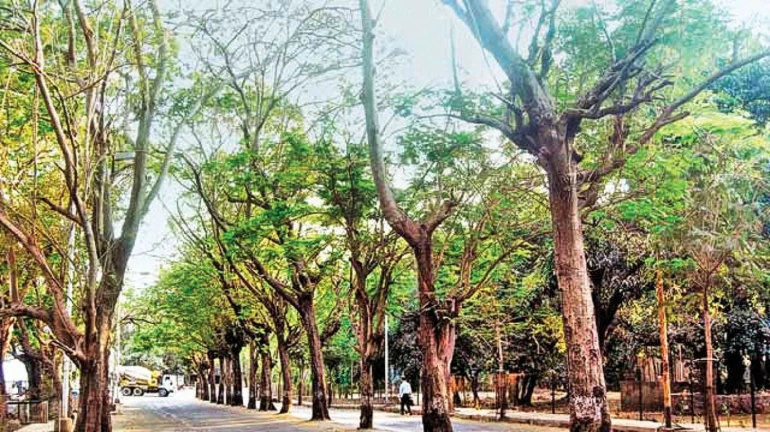
The Tree Authority of the Navi Mumbai Municipal Corporation (NMMC) has made the decision to stop planting a few species because of their vulnerability to high winds and rain. These species include Subabul, Gulmohar, Rain Tree, Okasia, Vilayati Tamarind, and Nilgiri. Rather, more hardy plants like Neem, Ashoka, Jambhul, Mango, Peltophorum, and Pimpal will be planted at more places.
This decision was made following the uprooting of over 200 trees at the start of the monsoon. In order to protect the current trees, NMMC intends to employ an arborist to carry out a comprehensive ground inspection and produce a report on tree health.
The municipal corporation has also made public its eagerly anticipated tree census report, which shows that there are 78% more trees now than there were when it was last counted. It highlights the city's efforts to increase its green space and create a more sustainable urban environment, according to officials.
According to the census, there are 15.29 lakh trees in Navi Mumbai, of which 11.44 lakh are native species and 3.85 lakh are not. 1,638 of these trees are designated as heritage trees. The differences in tree density between various places are also highlighted in the paper. With 3.33 million trees, ward number 26 in Advali and Bhutvali village, under the Koparkhairane node, has the most, while ward number 70 in Turbhe, surrounding Indira Nagar, has just 89 trees. With 1.29 lakh Sag trees, the city has the most of any place.
As part of sustainable development, NMMC chief and head of the Tree Authority Kailas Shinde has instructed officials to undertake massive plantations in each ward with a focus on indigenous species in order to boost the density of trees. The survey suggested planting more than 24 different species of trees because of their ability to regulate temperature, withstand drought, grow quickly, bear fruit, and withstand high temperatures. It also stressed routine upkeep and pruning, and recommended the elimination of 91,835 Subabul trees.
While the government is planning to plant more trees, on the other hand it also plans to uproot a few for the city's development.
For the construction of the Navi Mumbai International Airport (NMIA) and the Panvel-Karjat track doubling, 167 trees will be uprooted in Navi Mumbai.These trees can be spotted in front of the Sai temple near the Panvel railway station as well as along the sides of the Kalamboli to JNPA route between the airport and the Karnala Sports Academy in today's date.
Ashoka, Gulmohar, Jambhul, Badam, Rain Tree, Gulmohar, Karanj, and Mango are among the trees that need to be chopped. 500 saplings will be planted in place of the railway work, and another 1036 seedlings will be planted against the trees that will be chopped down for the airport development. While processing connected to railway work is ongoing, the licence to chop trees for airport work is nearing final clearance. Every year in March, the nodal officers' work would be assessed.





